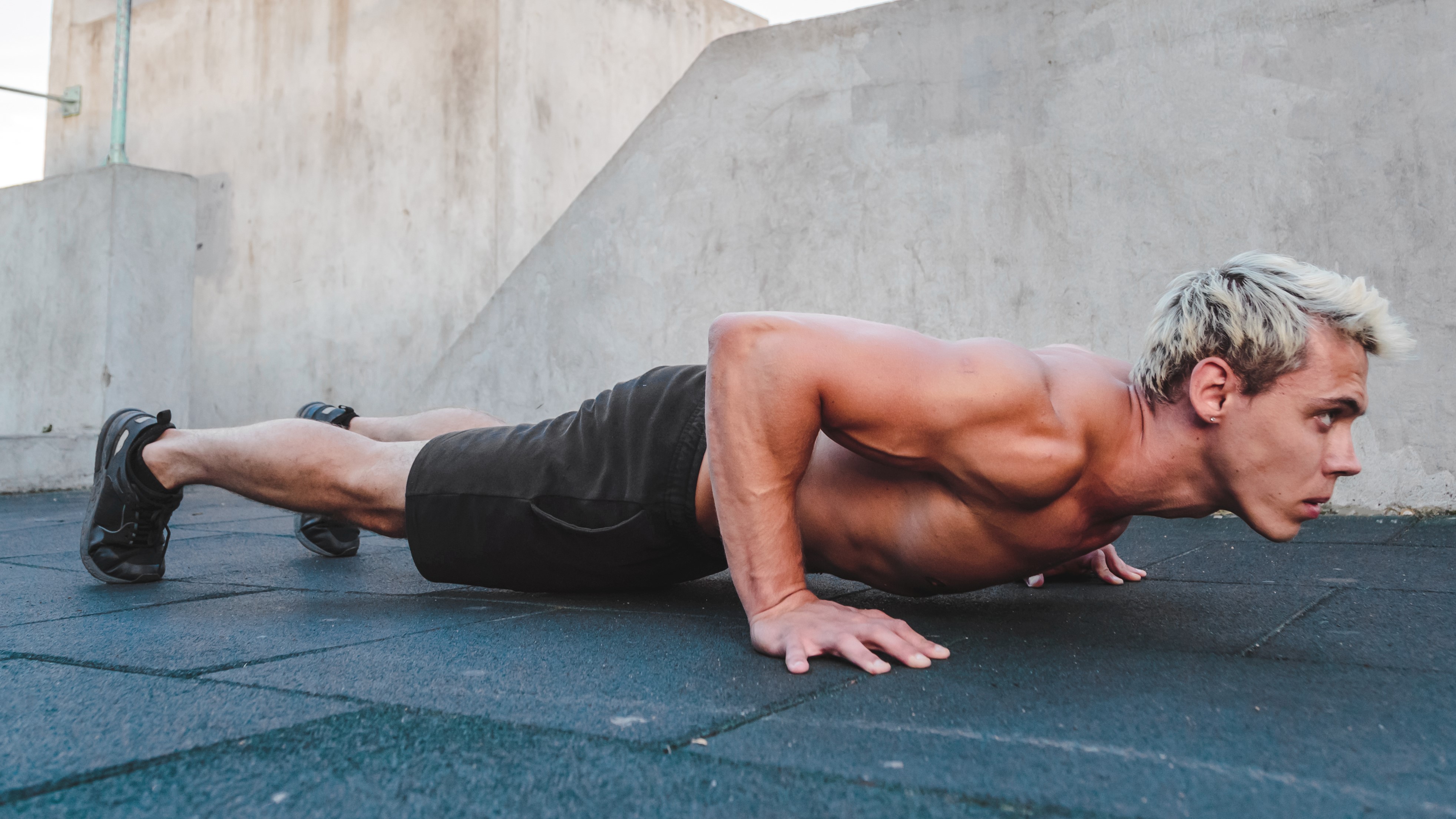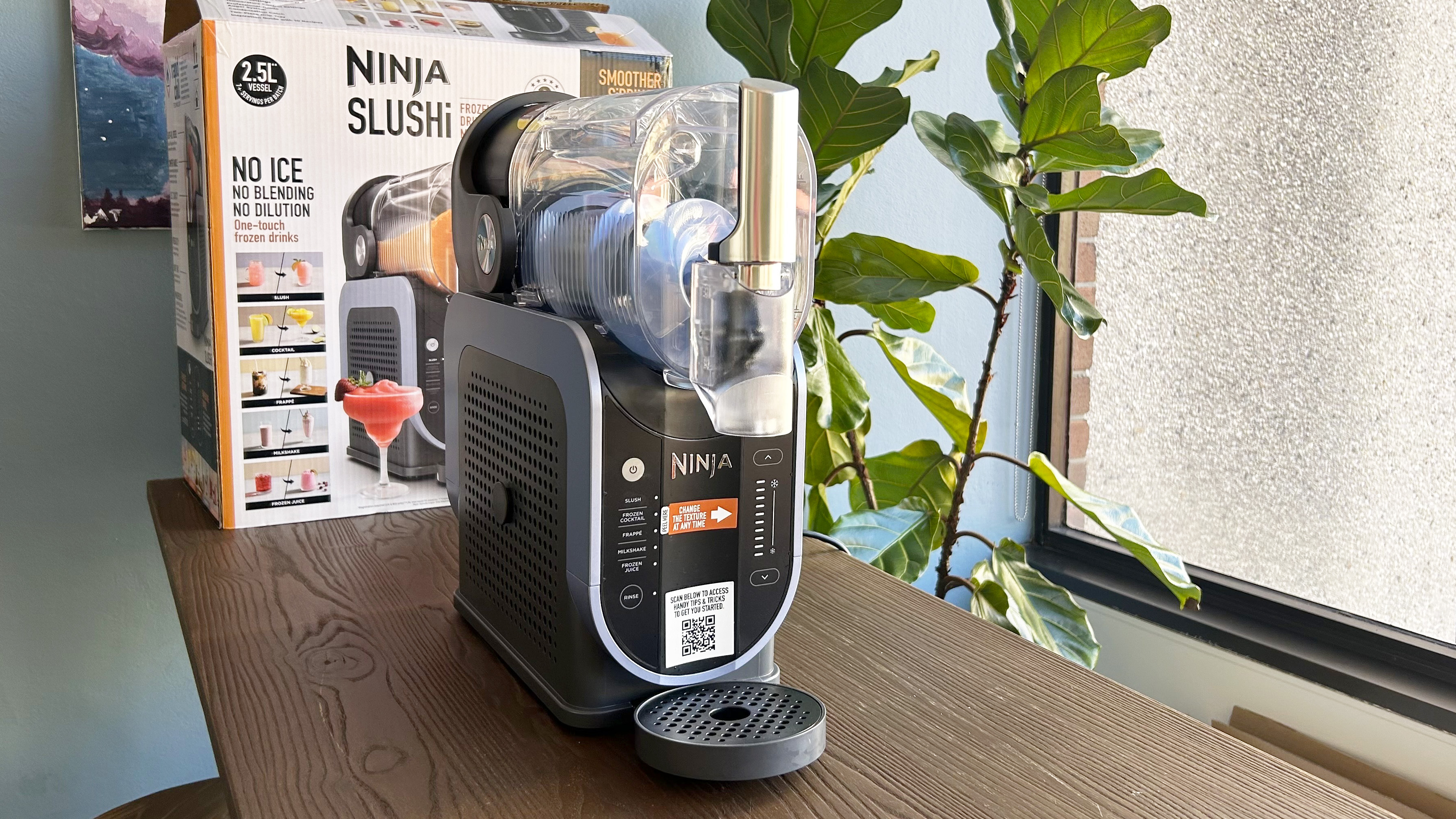
Before I write anything else, let me just say, I don't know what came over me when I committed to 70 wrestling burpees a day for one week. I still don’t know, after the fact. But here I am, writing about a fitness challenge that saw me diligently repping out a combined 490 wrestling burpees over seven days.
I blame YouTube. As a personal trainer, I love learning. Whether it's for my own personal growth or to use with clients, I find unexplored exercises exciting. I’d never seen this burpee variation before until I scrolled across it. How had I missed this?
Having already snuck them into a few upcoming class programs, I can tell you it’s a certified full-body burner, torching your chest, back, shoulders, arms, core, glute, hips and legs. If you haven’t seen a wrestling burpee before, below, I detail how to do them and lay out what happened when I did 70 reps a day for a week.
Grab one of the best yoga mats for home workouts, and read on. But please note this exercise isn't suitable for anyone suffering from back pain or sciatica.
How to do wrestling burpees
Admittedly, I was new to the exercise, having stumbled across the move during a YouTube scrolling session, so I drilled down on my technique before counting reps. And unlike regular burpees, they require a bit more thinking.
I recommend following along with the video below for the demonstration.
Here’s how to do it:
Sign up to get the BEST of Tom's Guide direct to your inbox.
Get instant access to breaking news, the hottest reviews, great deals and helpful tips.
- Start in a crouched position on the ball of your feet, chest up, core engaged
- Place your hands down in front of you, jump your feet behind you and lower your chest to the floor
- Press through your hands and lift your chest while pressing the hips toward the floor, similar to an upward-facing dog
- Reverse the movement by lifting your hips and jumping your feet forward into a crouched position, then perform a small hop before the next rep.
I did 70 wrestling burpees every day for a week — here’s what happened
I had to be careful of my back
As mentioned, burpees target most muscle groups, so you’ll find them in loads of the best CrossFit workouts and HIIT classes. The move also raises your heart rate and improves stamina, mobility and endurance. But if you get burpees wrong, you might lift your chest without your hips, arching your spine and putting pressure on your lower back.
Wrestling burpees do this in a controlled way. Like upward-dog in yoga, you’ll lift your chest and press your hips downward, stretching your hips, abs and lower back, which could improve torso mobility. But don’t compromise your back to get there, as I learned.
I got feedback early on from my lower back and had to slightly bend my elbows and squeeze my core until I’d finished warm-up reps (around 20 reps), and my muscles felt warmer and more flexible.
I felt exhausted
Any number of burpees above 20-30, and I have to start digging into my mental reserves. Wrestling burpees were no exception, and by 70 — I was cooked. The new movement pattern took more brain power to familiarize me with, but once in the flow, I could hammer out the 70 reps in one go with brief rests when I needed them. I found myself in a sweaty heap afterward, all the same.
I had fun (weirdly)
Unlike the constant high-to-low movement pattern of regular burpees, you stay close to the floor at all times, and I found it easier to build up rhythm and momentum, eventually finding a flow state throughout the week.
Once I’d gotten used to wrestling burpees, I began to find them quite fun. I know, who am I? You probably won’t agree if you’re not very flexible — this exercise gets “easier” if your body is open and bendy — so I recommend a warm-up using back and hip mobility exercises before you dive in. But thankfully, the high rep count gives you opportunity to properly warm up and adapt to the exercise, despite getting tired.
The DOMS were real
After the first day, my muscles ached from head to toe, and my back felt tighter than expected. DOMS — delayed muscle onset soreness — occurs after exercise that has particularly challenged your muscles and can happen to seasoned exercisers or beginners starting a workout program.
The school of thought used to be that lactic acid caused DOMS, but we now know it’s down to physiological factors causing ‘microscopic trauma’ to muscle fibers. Sleep, rest and adequate protein intake are crucial for helping the muscles repair and grow.
So, despite the savage DOMS all week, I knew my muscles were working hard.
It tested balance and coordination
Coordination and balance are two helpful tools for wrestling burpees to stop you from faceplanting the floor or traveling the length of the room (I did both), but equally, regularly training the mind-muscle connection through exercise should improve them.
A strong mind-muscle connection could also help you when lifting heavy weights, running or engaging in agility sports.
I did 70 wrestling burpees every day for a week — here’s my verdict
I felt fitter and more capable at the end of the week, which was surprising as I had no expectations approaching this fitness challenge. I can power through burpees when I have to, and (thankfully) I don’t dread them as much as some people, but my endurance and technique have improved.
Coordination and balance are two helpful tools for wrestling burpees to stop you from faceplanting the floor or traveling the length of the room (I did both).
I wouldn’t program wrestling burpees for my clients unless their burpee technique is spot-on. I could easily see people hurting their backs if they have limited mobility or don’t warm up properly when hurtling through high-rep count workouts.
But I had fun trying them, although the upward dog was the most challenging part by far, and my muscles need a good rest. If your goal is to develop and level up your burpee technique, why not give them a try?
More from Tom's Guide

Sam Hopes is a level 3 qualified trainer, level 2 reiki practitioner and senior fitness writer at Tom's Guide. She is also currently undertaking her Yoga For Athletes training course. Sam has written for various fitness brands and websites over the years and has experience across brands at Future such as Live Science, Fit&Well, Coach, and T3.
Having worked with fitness studios like F45 and Virgin Active, Sam now primarily teaches outdoor bootcamps, bodyweight, calisthenics and kettlebells. She also coaches mobility and stretching-focused classes several times a week and believes that true strength comes from a holistic approach to training your body.
Sam has completed two mixed doubles Hyrox competitions in London and the Netherlands and finished her first doubles attempt in 1:11.
